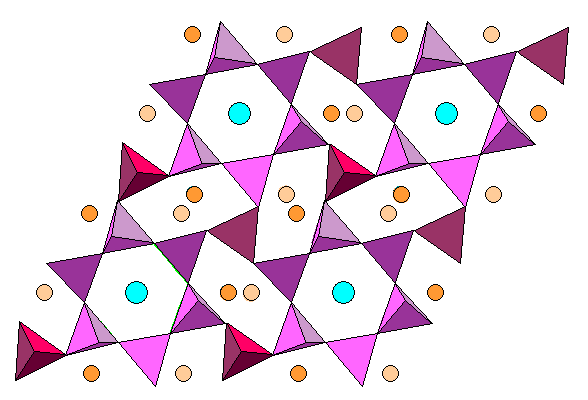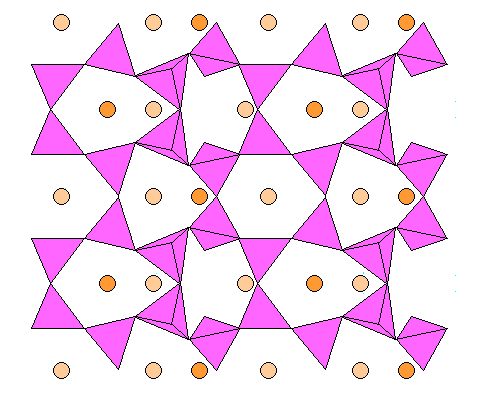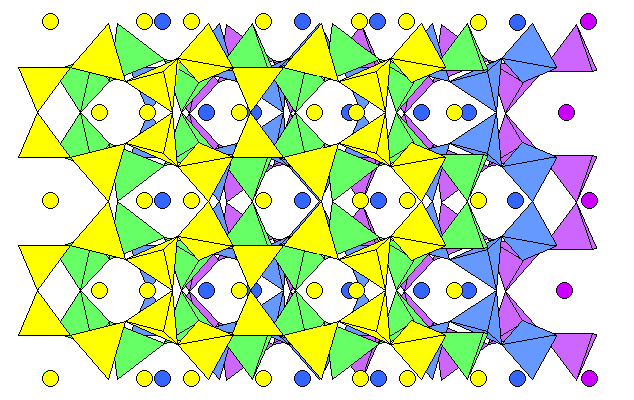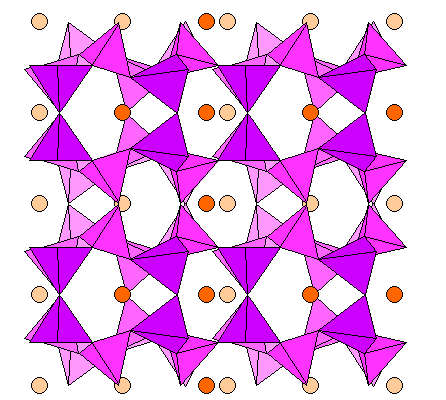Nepheline Structure
Steven Dutch, Professor Emeritus, Natural and Applied Sciences,
Nepheline is called a feldspathoid because it has a chemical compositions akin to the feldspars (Na2Al2Si3O10• 2H2O)but forms in silica poor rocks where there is insufficient silica to form feldspars (and of course, it never occurs with quartz). Nepheline has a composition like albite or anorthoclase, that is, a sodium aluminosilicate plus possible potassium. Like the feldspars, the aluminum occurs in the tetrahedra in place of silicon. In these figures, silica tetrahedra are purple, sodium is orange and water molecules are blue. Background objects are lighter in hue.

The structure of nepheline somewhat resembles that of tridymite. There are parallel sheets of tetrahedra alternately pointing up and down, linking to adjoining sheets. However, the structure of tridymite is perfectly regular, but that of nepheline is quite distorted because of the need to accomodate large cations. In plan view (above), the perfect hexagonal net of tridymite is distorted so that nearly regular hexagons are surrounded by three flattened hexagons.

In cross section view, the sheets are wrinkled. The view above shows a single layer with the c-axis vertical. The view below shows four layers, with yellow in the foreground and purple in the rear.

Below is a transverse view from a somewhat different angle.

Return to Mineralogy-Petrology Index
Return to Thin-Section Index
Return to Crystals and Light Index
Return to Crystal Structures Index
Return to Mineral Identification Tables
Return to Professor Dutch's Home Page
Created 22 April 2013, Last Update